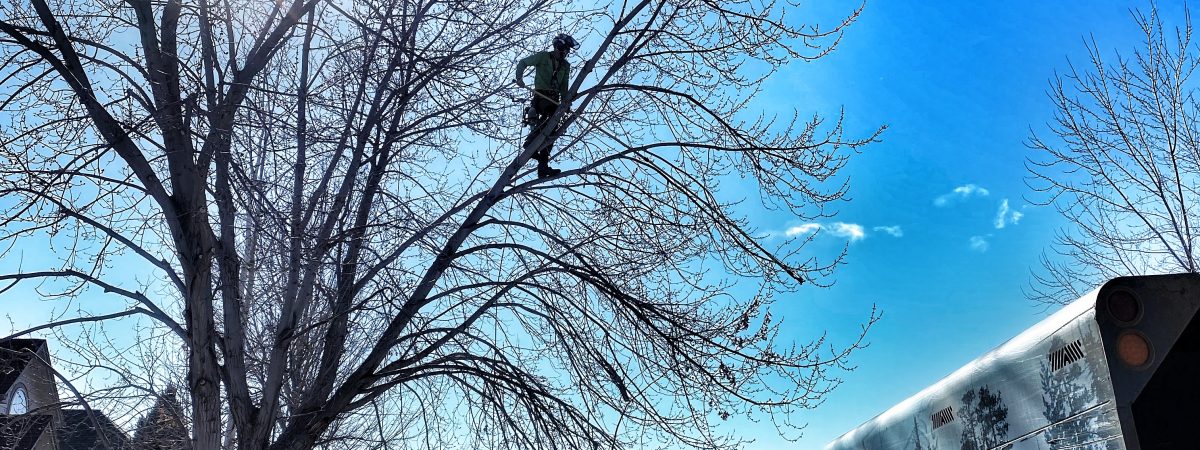Have you ever wondered what optimal tree pruning heights are? When deciding how high to prune your trees, it is easy to wonder how high they should actually be pruned. In many cases the height is completely up to the home/property owner, but there are certain cases when it is better to prune them higher and some situations when it is fine to leave them lower.
Here are some things to consider when determining optimal pruning options for your trees:
OPTIMAL PRUNING FOR CLEARANCE AND ORDINANCE
All Trees: Most municipalities require street trees or trees that grow over sidewalks and roads to be at a certain height. In most cases this is about 8 feet over the sidewalk and 13 feet over the street, and street signs must also be visible from 150 feet away. Not having your tree pruned to these heights can sometimes result in fines or branches being broken by vehicles passing by. This is not required for young trees which are not tall enough to be pruned to these heights, but they will still need to be pruned to prevent damage to their lower limbs by passing vehicles.
OPTIMAL PRUNING FOR HEALTH
Evergreens: While some trees don’t have lower branches from a young age, evergreens can have many lower branches that often touch the ground. Thankfully they are not usually prone to competing with the central stem so leaving them is fine in most cases. In some situations, it is a good idea to remove a few feet of the lower branches such as when excessive amounts of moisture are present. Needlecast diseases can spread and cause needles on the lower areas of the tree to discolor and drop. They are rare in the Front Range due to the dry climate, but when trees are overwatered and have inadequate draining these diseases can occur.
Deciduous: Deciduous trees can often have lower branches that arise early in their life or due to stress. If left to grow these branches can become too large to remove with a simple pruning without stressing out the tree or leaving it susceptible to infection or decay.
A deciduous tree is one that sheds leaves on an annual basis (typically this happens in the fall or winter). These trees go through a process called leaf senescence, which is triggered by changes in temperature, daylight, and water availability. As the leaves prepare to fall, the tree moves nutrients and resources to the branches and roots to survive the winter. Deciduous trees are common in temperate regions and provide stunning color displays as they change throughout the seasons. Examples of these trees include maple trees, elm trees, oak trees, etc.
PRUNING BASED ON PREFERENCE
When health and ordinances are not a concern, the optimal tree pruning heights can be determined by the owners personal preference — trees can be pruned to any height. Most home/property owners prefer to leave their trees as low as possible when they are younger and they opt to have the limbs pruned up only to allow for any necessary landscaping to be planted underneath the canopy.
To receive a free estimate for your next tree pruning project, contact one of Splintered Forest’s ISA Certified Arborists to discuss your options. Call us today at (303) 819-9840, text us or submit a form online to schedule your no obligation consultation today!
Sources:
https://extension.colostate.edu/docs/misc/NeedleCasts.pdf

